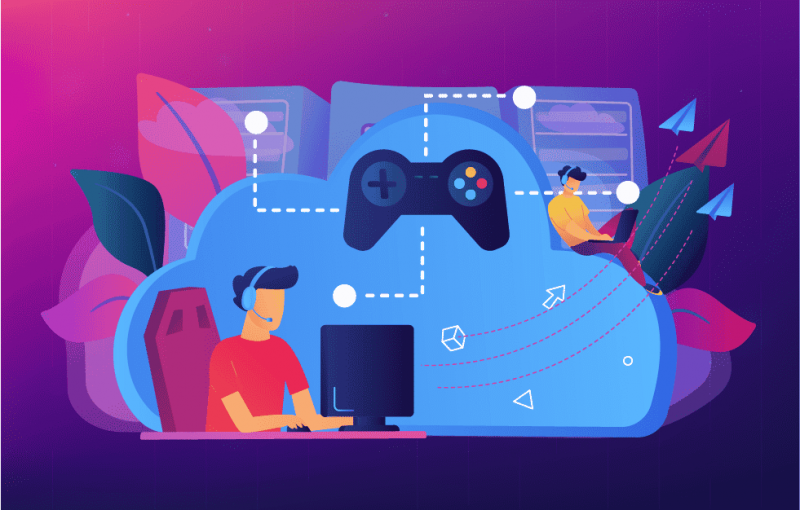Gaming has come a long way since the first video games were released in the 1970s. From bulky consoles to handheld devices, the gaming industry has evolved constantly to provide immersive gaming experiences to players. The latest innovation in this space is cloud gaming which promises to revolutionize how we play games. By leveraging the power of cloud computing, cloud gaming provides an alternative to local gaming by streaming games from remote servers.
How does cloud gaming work?
Cloud gaming uses cloud computing infrastructure where the game is processed and rendered on remote servers rather than on a local device. The player’s commands are sent to these remote servers from their device which could be a PC, smartphone, tablet or other compatible device. The video of the game is then compressed and streamed back to the player’s device in real-time. This allows even less powerful devices like phones and tablets to play graphic intensive games.
Some key aspects that enable cloud gaming are:
Powerful Server Hardware: Game servers used for cloud gaming have powerful GPUs and CPUs for handling graphics processing and game logic. This allows them to run even the most demanding games.
Low-latency Network: For a seamless experience, the network connecting the player device and game server should have minimal latency. This ensures near real-time responsiveness between user inputs and resulting actions on screen.
Video Compression: Advanced video compression techniques compress the game video output efficiently while preserving quality for transmission over the network.
Access Anywhere: Since the processing happens remotely, players can access their games from any device that has a compatible Cloud Gaming app and high-speed internet connection. This provides truly mobile and portable gaming.
Major Cloud Gaming Services
Several big tech companies have entered the cloud gaming space in recent years:
Google Stadia: Launched in 2019, Stadia is Google's game streaming service that delivers games in 4K resolution at 60fps. It supports a range of devices and has over 50 games in its library.
Microsoft xCloud: Part of Microsoft's Game Pass Ultimate subscription service, xCloud allows streaming Xbox games to Android and iOS devices. It utilizes Microsoft's vast Azure cloud infrastructure.
Nvidia GeForce Now: Nvidia's platform streams games you already own from top digital stores to your device using Nvidia's graphics cards. It supports over 1,000 titles.
Amazon Luna: Launched in 2020, Luna provides high-fidelity gaming experiences on Fire TV, PC and mobile devices. It has a growing library of popular games.
Benefits of Cloud Gaming
There are several advantages that cloud gaming provides over local hardware-based gaming:
Ubiquitous Access: Players can enjoy their favorite games on the go from any internet-connected device without having dedicated console hardware.
Lower Upfront Cost: There is no need to spend money on powerful PCs or consoles. Monthly subscription fees provide access to a large library of games.
Hardware Independence: The latest games can run on low-spec devices as processing happens remotely on cloud servers. Users need not constantly upgrade.
Simplified Gaming: Games install automatically on the server, eliminating wait times. Storage issues are also non-existent since games run remotely.
Shareable Libraries: Multiple users can access the same game library simultaneously or take turns playing the same title on different devices.
Challenges Ahead
While cloud gaming promises much, there are still some challenges that need to be overcome for it to become the mainstream:
Dependence On Internet: Reliable high-speed internet connections everywhere are required for an optimal experience without lag. Service in rural areas still needs improvement.
Latency Issues: Despite advances, some latency or input lag is still present compared to local hardware gaming which can hamper experiences in competitive multiplayer games.
Business Models: It remains to be seen how gaming companies will monetize their services and libraries long term. Different models like subscriptions and freemium need to coexist.
Data Usage: Streaming high quality gaming videos consumes significant data. Caps or slowdowns during peak usage times can impact the experience and adoption.
Standardization: Agreement on open standards and protocols is required for global compatibility of games across services and business partnerships.
Get More Insights on Cloud Gaming
